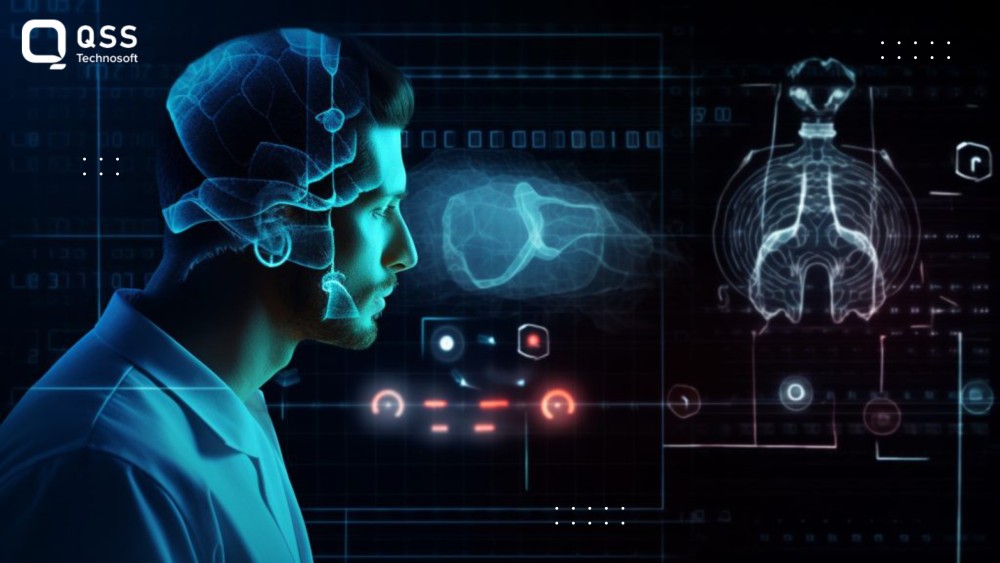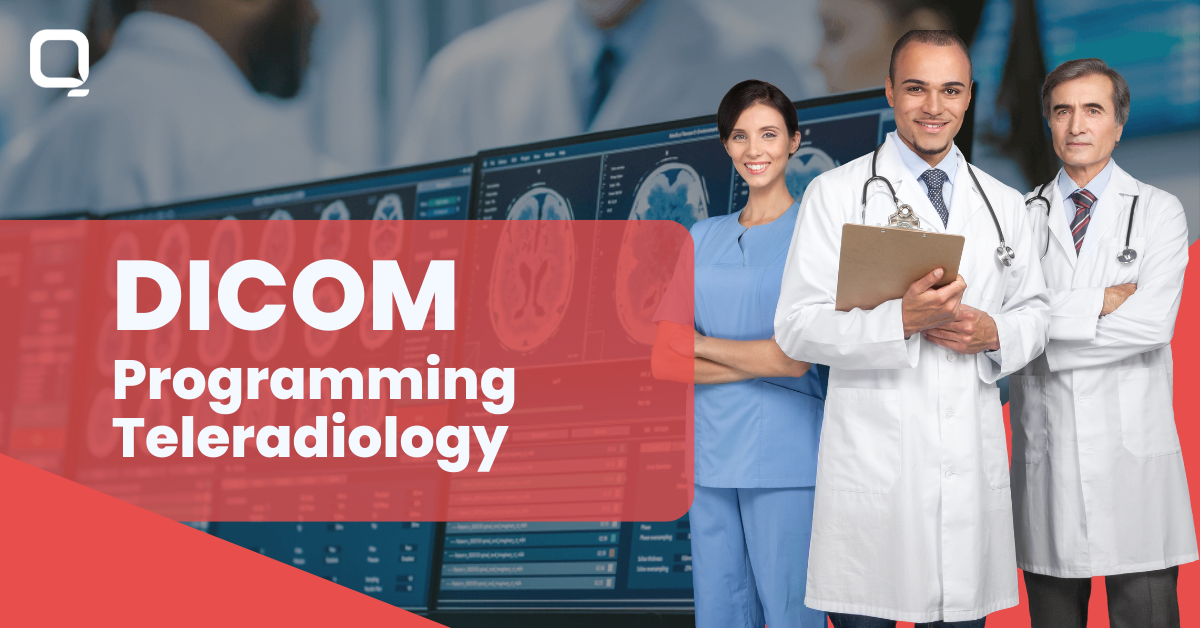In the world of medical imaging, Picture Archiving and Communication Systems (PACS) have revolutionised the way healthcare providers manage and store patient images. Over the years, PACS technology has evolved, and newer DICOM-compliant systems have emerged as the next generation of medical imaging solutions. This article explores the benefits and downsides of migrating from an older PACS to a newer DICOM-compliant system.
Understanding PACS and DICOM
PACS (Picture Archiving and Communication System), or PACS, is a digital imaging technology that allows healthcare providers to store, manage, and share medical images like X-rays, MRIs, and CT scans electronically.
Gone are the days of storing and sifting through X-ray films to make a diagnosis; with PACS, medical images are far more easily accessible and distributable from various locations within a healthcare facility.

Improved efficiency and data compatibility have become ever more essential, and that’s where DICOM (Digital Imaging and Communications in Medicine) comes in. This standard format facilitates seamless communication and exchange of patient data across different imaging and systems. It ensures interoperability and compatibility between different devices and programs, allowing for a unified storage, management, and services infrastructure surrounding medical images.
1.Benefits of Migrating to a DICOM-Compliant System
Improved Interoperability
DICOM, which stands for Digital Imaging and Communications in Medicine, is a standardized format for storing medical images. By migrating to a DICOM-compliant system, healthcare providers and institutions can enjoy many benefits. Interoperability improves with this standardization, leading to smoother exchanges of files regardless of vendor or manufacturer. This feature is especially important when providing patient care or collaborating with other medical institutions. The improved interoperability of DICOM is an invaluable asset when it comes to patient care needs.
Enhanced Image Quality
Newer medical imaging techniques are made compatible with DICOM systems, providing healthcare professionals with advanced image processing and visualisation tools. That means radiologists and other practitioners have enhanced image clarity, capable of producing greatly improved images.
Now, precision becomes easier to access and every nuance can be seen in detail. Such clarity makes accurate diagnosis far less complicated, allowing insight into the full extent of a patient’s affliction.
Scalability
DICOM-compliant systems are typically designed with scalability in mind. As healthcare organizations grow and their imaging needs increase, these systems can easily accommodate additional data storage, processing power, and user access. This scalability ensures that the system can adapt to the evolving demands of a healthcare facility without significant disruptions.
Enhanced Security
Security is a paramount concern in healthcare, and newer DICOM-compliant systems often include robust security features to protect patient data and images. These systems incorporate encryption, access controls, and audit trails to safeguard sensitive information from unauthorized access or breaches. Improved security measures are essential for complying with healthcare data privacy regulations.
Integration with Electronic Health Records (EHRs)
Integration between Picture Archiving Communication System (PACS) and Electronic Health Record (EHR) systems is pivotal to provide patient care that is holistic and comprehensive. To optimize performance, DICOM compliant systems are better suited to connect with EHRs in a way that ensures easy access to, and distribution of, patient imaging data within the health network. The outcome of such a connection positively streamlines the workflow process, eliminating the onerous task of redundant data organizational and stimulating total operational efficiency.
2.Downsides and Challenges of Migration
While the benefits of migrating to a DICOM-compliant system are compelling, there are also downsides and challenges that healthcare organizations must consider:
Cost
Migrating from an older PACS to a newer DICOM-compliant system can be costly. Healthcare organizations must budget for software and hardware purchases, data migration, training, and potential downtime during the transition. While the long-term benefits may outweigh the initial costs, this financial investment can pose a significant challenge for some institutions, especially smaller healthcare providers.

Learning Curve
Adapting to a new system can be challenging for healthcare professionals who are accustomed to using the older PACS. There may be a learning curve associated with the new software, which can temporarily impact productivity and workflow efficiency. Comprehensive training programs are essential to minimize these disruptions.
Data Migration
Migrating existing patient data from a legacy PACS to a DICOM-compliant system can be a demanding operation. The intricacies of the process exhibited by complex structures and numerous working parts hinder the rate of data movement everywhere. Time must be taken to carefully plan, test and validate the entire transfer, as precaution must be taken to ensure accuracy and integrity. After all, the medical field declines to accept mistakes that prevent patients from achieving the care they deserve.
System Downtime
During the migration process, healthcare organizations may experience system downtime, which can disrupt clinical workflows. Minimizing downtime is essential to ensure uninterrupted patient care. Implementing a well-thought-out migration plan, which may involve performing the migration in stages or during non-peak hours, can help mitigate this challenge.
Resistance to Change
Healthcare professionals may resist the transition to a new system, especially if they are comfortable with the older PACS. Resistance to change can hinder the adoption of new technology and delay the realization of the benefits associated with DICOM-compliant systems. Effective change management strategies and communication are crucial to address this challenge.
Conclusion
Migrating from an older PACS to a more modern DICOM-compliant machine has many ability advantages. Interoperability, photograph high-quality, scalability, safety, and integration with EHRs are all stepped forward. Healthcare Development establishments must weigh now not just the ability rewards, but the costs and complexity related to such exchange, along with prices, the studying curve, statistics migration, device downtime, and resistance to change.
However, many health care providers have determined that regardless of the epistemic hurdles involved, the probable enhancements to affected person care, increases in efficiency, and more suitable compliance with enterprise standards provide a comprehensive and worthwhile charter incentive to make the switch. The desires and mechanisms of the fitness care provider must tell the selection and result in a sincere evaluation of both capacity benefits and capability dangers.
Why should you choose QSS Technosoft Inc. for your migration from an older PACS to a newer DICOM-compliant system?
QSS Technosoft Inc. has several years of experience in providing effective and easy PACS migration services. Our team of experts have an extensive knowledge of legacy systems and DICOM standards, which provides an improved transition to the upgraded system.
We offer tailored solutions to meet the individual needs of each of our clients. We acknowledge that different institutions have varying workflow and data management procedures, so we offer costumed migration options that reduce disruption and downtime.
Moreover, QSS Technosoft Inc. makes use of state-of-the-art technology and tools to make sure data quality and confidentiality are kept incessantly throughout the migration process. We execute stringent protocols to marry adopters highly sensitive information adhering to HIPAA regulations.
Not only are comprehensive training and support present for the new system, contributing to a nonstop transition for employees but ongoing maintenance and support are provided to consecutively guarantee maximum function.
We are proud to mention that our work has been recognized by leading B2B reviews and research platforms like GoodFirms, Clutch, MirrorView, and many more.
















